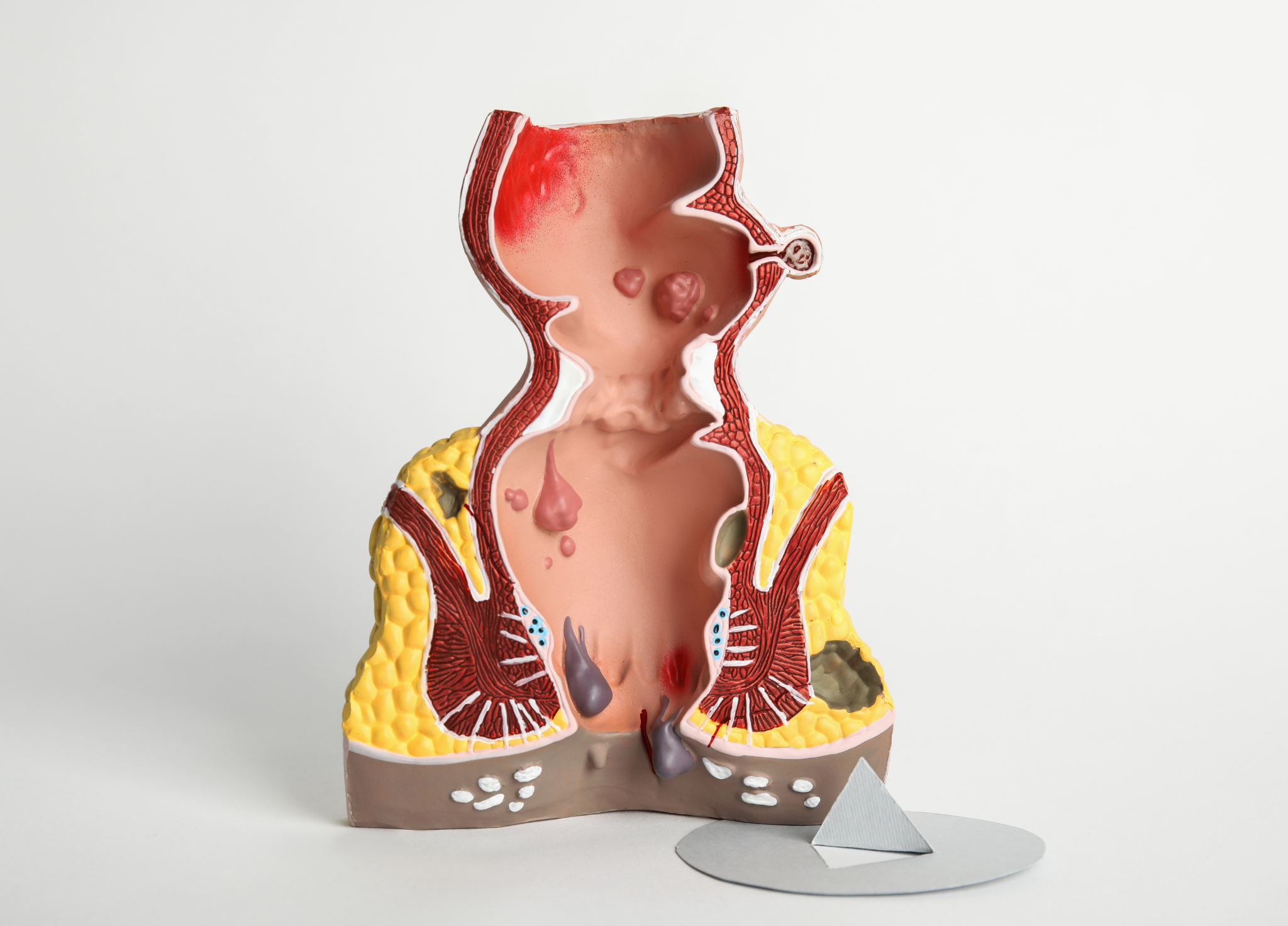Category
Hemorrhoids, a common and often uncomfortable condition, affect a significant portion of the population.

Have any questions?
If you have any questions, feel free to contact us at [email protected]. A member of our support team will help you shortly.
Share this blog
Fatigue
Energy
Stress
Sleep
Hemorrhoids, a common and often uncomfortable condition, affect a significant portion of the population. Among the different types, internal haemorrhoids can be particularly challenging as they develop inside the rectum, making them less visible but potentially more symptomatic. This article will explore the symptoms, causes, and effective relief strategies for internal haemorrhoids.
Internal haemorrhoids are vascular structures inside the rectum, the last portion of the large intestine. They are cushion-like structures made of blood vessels and connective tissue. While internal haemorrhoids don't typically cause pain because they lack nerve endings, they can lead to a range of symptoms when irritated or inflamed.
One of the most common symptoms is bright red blood during bowel movements. Blood may be noticed on toilet paper or in the toilet bowl.
Internal haemorrhoids may protrude or prolapse outside the anal opening during bowel movements. They may retract spontaneously or require manual adjustment.
Blood associated with internal haemorrhoids is usually painless, distinguishing it from bleeding related to anal fissures or external haemorrhoids.
Some individuals may experience a feeling of fullness or discomfort in the rectum, along with itching.
Internal haemorrhoids can cause the secretion of mucus, leading to a sensation of dampness in the anal area.
Chronic straining during bowel movements, often due to constipation, is a primary cause of internal haemorrhoids. Straining can lead to increased pressure in the rectal veins.
Some individuals may have a genetic predisposition to developing haemorrhoids, as the condition can run in families.
Increased pressure on the pelvic veins during pregnancy can contribute to the development of internal haemorrhoids. Hormonal changes may also play a role.
Excess body weight can put additional pressure on the rectal veins, increasing the risk of haemorrhoid development.
Lack of physical activity and prolonged periods of sitting or standing can contribute to the development of internal haemorrhoids.
Insufficient fibre intake can lead to constipation, contributing to straining during bowel movements and the formation of internal haemorrhoids.
Engaging in anal intercourse, mainly if it is forceful or involves insufficient lubrication, can contribute to the development or irritation of internal haemorrhoids.
Increasing dietary fibre can soften stools and make them easier to pass, reducing the need for straining during bowel movements. Fibre-rich foods include fruits, vegetables, whole grains, and legumes.
Staying well-hydrated is essential for maintaining soft and bulky stools. Adequate hydration supports overall digestive health and can help prevent constipation.
Warm sitz baths, where the lower part of the body is immersed in warm water for about 15 minutes, can help soothe the discomfort associated with internal haemorrhoids. This can be done several times a day.
Over-the-counter creams, ointments, or suppositories containing ingredients like hydrocortisone or witch hazel can relieve itching and discomfort.
Gently clean the anal area with moistened, unscented wipes or witch hazel pads after bowel movements can help reduce irritation.
Straining during bowel movements exacerbates the symptoms of internal haemorrhoids. Taking time and allowing the body to have a natural bowel movement can reduce the risk of irritation.
Engaging in regular physical activity helps promote healthy bowel function and prevents constipation. Aim for at least 30 minutes of moderate exercise most days of the week.
Maintaining a healthy weight through proper diet and regular exercise can reduce the pressure on the rectal veins and decrease the risk of internal haemorrhoids.
If it's challenging to get enough fibre from diet alone, fibre supplements such as psyllium husk can be considered. However, drinking plenty of water when taking fibre supplements is essential.
In cases where conservative measures are insufficient, medical procedures may be recommended by a healthcare professional: Rubber Band Ligation: This involves placing a rubber band around the base of the haemorrhoid to cut off its blood supply, causing it to shrink and fall off. Sclerotherapy: A chemical solution is injected into the blood vessels to shrink haemorrhoids. Infrared Coagulation: Infrared light thickens the blood vessels, causing haemorrhoids to shrink. Hemorrhoidectomy: Surgical removal of haemorrhoids may be considered in severe cases.
While many cases of internal haemorrhoids can be managed with lifestyle modifications and over-the-counter treatments, individuals should seek professional help if they experience: Persistent or severe rectal bleeding. Significant pain or discomfort. Prolapsed haemorrhoids that do not retract. Unexplained weight loss. Change in bowel habits.
Internal haemorrhoids, while often a source of discomfort, can be effectively managed with lifestyle changes and conservative treatments. Understanding the symptoms, causes, and relief strategies empowers individuals to take proactive steps toward managing internal haemorrhoids. By incorporating healthy habits, maintaining proper hygiene, and seeking medical advice, individuals can alleviate symptoms and improve their overall quality of life.